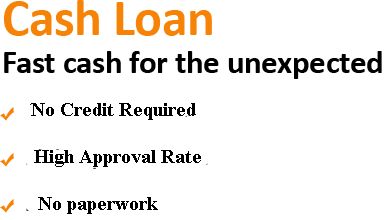$1,000 Payday Loan vs Installment Loan Comparison
When you’re considering borrowing $1,000, it’s important to understand how two common types of loans differ: payday loans and installment loans. One offers fast, short-term access but comes with high risk and cost. The other spreads your payments out, making repayment more manageable. As a trusted lending partner, EasyFinance.com (BBB-accredited) helps you compare the right option for you—so you borrow smart, not rushed.
What is a $1,000 Payday Loan?
A payday loan is a short-term cash advance designed to be repaid by your next payday (or sometimes within a few weeks). The amount you borrow is often quite small—frequently under $500 in many states—but some lenders advertise amounts up to $1,000 depending on state laws and income.
Key features include:
- Minimal approval requirements (often just proof of income and a checking account).
- Funds may be available very quickly—same day or next business day.
- Repayment in one lump sum or via automatic withdrawal on your next paycheck.
- Very high fees and effective APRs—sometimes 300-400% or more.
For example, with a $1,000 payday loan you might receive the money today but owe it back entirely within two to four weeks, plus fees. If you cannot repay by then, you may roll it over into another loan, which increases cost and risk of debt cycle.

What is a $1,000 Installment Loan?
An installment loan is a loan where you receive a lump sum (in this case $1,000) and repay in equal monthly installments over a set term—often several months to a few years. Installment loans are more structured and tend to carry lower interest compared to payday products.
Key features include:
- Fixed monthly payments (e.g., 6-18 or 12-36 months) so you can budget accordingly.
- Lower effective interest rates (APR) than payday loans—depending on credit and term.
- Approved by banks, credit unions or online lenders willing to assess your income and repayment ability.
- Funds may arrive quickly, but approval typically involves more verification than payday loans.
For a $1,000 installment loan you might pay a monthly payment that fits your budget and repay over time, avoiding the high stress of a single large payoff.
Side-by-Side Comparison
| Feature | Payday Loan | Installment Loan |
|---|---|---|
| Loan amount | Often under $500 in many cases, though some up to $1,000 | $1,000 is common and higher amounts available |
| Repayment schedule | One large payment in 2-4 weeks | Monthly payments for 6-24+ months |
| APR / total cost | Very high—often 300-400% or more | Lower—ranges vary widely, typically under 36% for many lenders |
| Credit check / approval | Minimal; quick approval | Credit/income evaluated; slightly more process |
| Purpose and risk | For urgent short-term cash—high risk of cycle | Better for planned borrowing and budgeted repayment |
Why Choose an Installment Loan Over a Payday Loan for $1,000?
Here are some reasons installment loans often make better sense:
- You avoid a single large immediate payment that could strain your budget.
- You spread the cost over time, making repayment more predictable.
- You often pay much less total interest and avoid high rollover fees.
- You build a track record of on-time payments, which may help future credit. Many payday loans don’t report positive payment behavior.
When a Payday Loan Might Be Justified
A payday loan might make sense if:
- You literally have no other option and must cover a critical urgent expense before payday.
- You can repay it in full with your next paycheck, without compromising essentials.
- You are aware of and comfortable with the high cost and risk of rollover.
However, many financial advisers warn that payday loans are risky for amounts like $1,000. Most borrowers are better served by installment loans or other alternatives.
How to Use a $1,000 Installment Loan Safely
If you choose an installment loan for $1,000, follow these best practices:
- Borrow only what you need and can repay. A $1,000 loan should fit your budget.
- Select the shortest term you can afford — shorter terms reduce total interest.
- Review the APR, fees and monthly payment before accepting any offer.
- Use a trusted marketplace like EasyFinance.com to compare lenders, terms and costs.
- Make every payment on time—this helps avoid extra fees and builds credit.
Key Insights
- A $1,000 payday loan is fast but costly and risky—often due in a few weeks with high fees.
- A $1,000 installment loan spreads payments over months, offers lower cost and better budgeting.
- Installment loans tend to be safer for borrowers who can handle monthly payment commitments.
- Only use a payday-style loan if it is truly the only option and you can repay quickly.
- EasyFinance.com is a BBB-accredited platform that helps you compare installment loan offers, so you choose with clarity and control.
FAQ
Can I borrow $1,000 with a payday loan?
Possibly, depending on state laws and lender policies, although payday loans are often limited to smaller amounts and very short terms.
Is it better to choose an installment loan for $1,000?
In most cases yes—if you can qualify and repay over time. Installment loans are more manageable, build credit, and offer lower total cost.
What happens if I cannot repay my payday loan on time?
If you cannot repay on time, you may incur rollover fees, higher cost, risk of debt cycle and negative impact on your finances.
Are installment loans reported to credit bureaus?
Often yes—on-time payments may help build credit, but missed payments can harm your credit.
How do I compare offers for a $1,000 loan?
Use a platform like EasyFinance.com to compare multiple offers side-by-side. Check APR, term length, monthly payment, fees, and funding speed before choosing.







